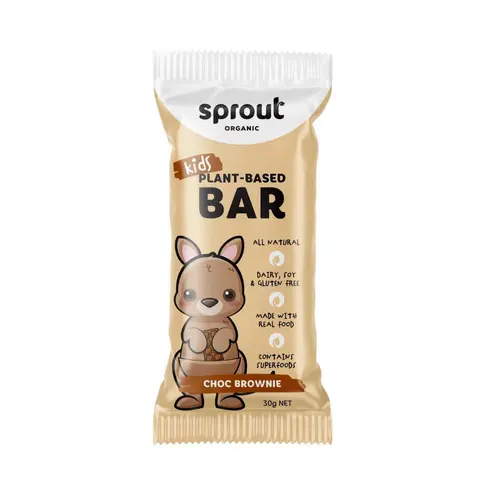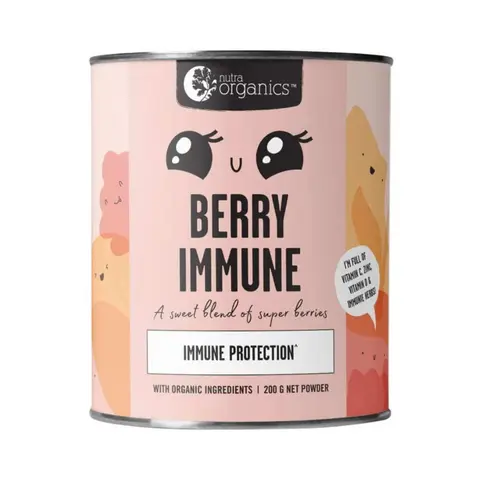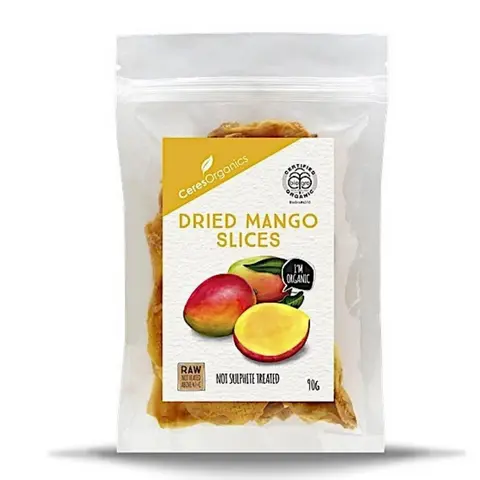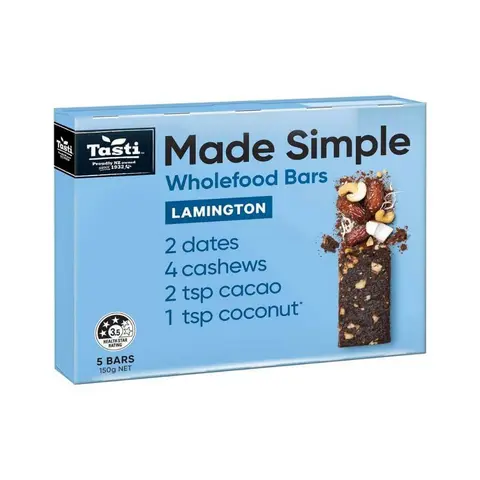Back
Navigating food labels can be confusing. We’re bombarded with messages and marketing claims and it seems that companies are getting more and more clever with ways of tricking us into thinking a product is healthy.
Children are constantly growing and it’s important that in this stage of development their nutritional needs are being met. The food that they eat can help them grow healthy and strong, which is why there is an increased need for certain nutrients and an emphasis should be placed on getting them to eat real foods. When they consume real foods, they are able to get the naturally occurring nutrients that come with them. After all, the food they eat should be their primary source of nutrition.
Steering clear of highly processed and nutritionally void foods is of benefit for our kids. Instead, we can opt for real food products that are packed full of nutrients and will help them grow up healthy. In order to do that, we need to know how to navigate food labels and be empowered to know what to avoid and what to choose instead.
Here are 10 things to watch out for on the labels of kids foods:
1. Appealing Packaging
If something looks good, it’s automatically more appealing and we’re more likely to pick it up or add it to our cart. Appealing packaging isn’t always a bad thing, but when it’s being used as a distraction or something to lure our children in, then we want to be cautious. Sometimes the bright colours and cute graphics are enough to get our kids tugging at our sleeves asking if they can have it. Make sure you look past the packaging and read the ingredients that have gone into the product.
These products give us the best of both worlds, cute packaging and real food ingredients:
Sprout Organic Chocolate Brownie Kids Bar

Ingredients: Organic Sultanas, Vegan Chocolate 16% (Cocoa Mass, Organic Coconut Sugar, Cocoa Butter, Natural Vanilla Flavour), Organic Coconut Chips, Organic Quinoa Flakes, Organic Rice Malt, Organic Cacao Powder, Rice Bran Shreds (Rice Flour, Rice Bran, Prune Juice), Organic Coconut Oil.
Nutra Organics Berry Immune (Immune Protection) 200g

Ingredients: Super Berries (42 %) (Strawberry*, Camu Camu*, Rosehip*, Wildcrafted Sea Buckthorn*, Acai Berry*, Blueberry, Raspberry, Elderberry, Maqui Berry*), Mango, Beetroot*, Jerusalem Artichoke Inulin* (Prebiotic Fibre), Lucuma*, Rice Extract*, Natural Plant Based Flavours (Berry, Monk Fruit), Orgen® Natural Plant Extracts (Curry Leaf*, Guava Leaf*), Echinacea, Shiitake Mushroom*.
2. False Promises
Whether a product is telling you it’s food for athletes or there are pictures of athletic kids on the front, don’t be deceived into thinking that these products are healthy. There are certain kids products that pride themselves on being food for sports performance and are targeted towards athletic kids, but they’re nothing more than refined ingredients, sugar and additives. Certainly not the kinds of foods an athletic or active child should truly be eating.
3. Unlikely Brand Ambassadors
Athletes and celebrities often endorse food products, and kids food are no exemption. Keep in mind that most of the time these ambassadors aren’t actually eating or feeding their family these foods. The sad reality is that they’re just being paid money to make us think that they do. One example is seeing world class athletes endorse highly refined cereals. There’s no way they’d be eating that under the guidance of their Nutritionist or Dietitian while following their strict training regimen. Just because we see people of influence promoting something, make sure you do your own research and actually look at what’s in the product you’re considering feeding your kids.
4. ’Made with Real Fruit’ Claims
You’d think the claim ‘made with real fruit’ would be a good thing right? Under normal circumstances it would, but sometimes it can just be a clever distraction. Make sure you turn the packet over and take a look at the percentage of real fruit that they’ve used. If they’ve used 2% real fruit, what is the rest made up of? Have they used fruit flavours or concentrates? These aren’t always the same as the real fruit itself.
Speaking of real fruit, dried fruit can be a great snack or ingredient used within kids products. However, many types of dried fruits contain preservatives, including sulphites. Watch out for dried fruits that are vibrant in colour. For example, dried apricots that don’t contain sulphites will actually be a dark brown, as opposed to the bright orange we’re used to.
Here’s an example of an actual ‘real fruit’ product that contains none of the preservatives:
Ceres Organics Mango Slices

Ingredients: Certified Organic Mango Slices (Not sulphite treated)
5. The ’No Added Sugar’ Claim
Knowing that sugar can lead to hyperactivity and in some cases behavioural issues, it is an ingredient that can be beneficial to minimise in the kids products we’re purchasing. It almost seems counterintuitive to say that we should watch out for products that have ‘no added sugar’ claims. However, this claim may actually mean that the product has been sweetened with something else. This is a red flag because if they’ve replaced the sugar with artificial sweeteners, then it’s no better. Artificial sweeteners are synthetic and often highly processed. Their intense sweetness can lead to our kids’ tastebuds craving sweeter and sweeter things and there’s not enough long-term studies showing what their health impacts are. Try choosing products that are sweetened with fruit, raw honey or maple syrup instead.
We can check the sugar content of a food by looking at the nutrition panel. Go to the sugar column and look at the quantity per 100g, this will give you the percentage of sugar that this product is made of. For example, if the product has 50g of sugar per 100g, it is 50% sugar. It’s also important to acknowledge where the sugar is coming from, which we can see on the ingredients panel. Ideally, we want to see it coming from good quality dried fruit or real food sweeteners like honey and maple syrup, as opposed to refined sugars.
One example of a naturally sweetened product is this kid-friendly bar that uses dates as the sweetener of choice:
Tasti Made Simple Wholefood Bars Lamington 5 bars 150g

Ingredients: Dates (60%), Roasted Cashews (13%), Cacao Powder (11%), Sunflower Seed Butter (10%), Coconut (5%), Natural Flavour.
6. ’Fat Free' or ‘Low Fat’ Promises
Fat has been demonised in the past, but we actually need healthy fats in our diet. They help us absorb fat soluble vitamins like A, D, E and K and fats themselves have a number of important functions within our body. This makes them vital for the growth and development of our little ones and is a macronutrient they should be incorporating.
Many times when products are fat free or low fat, they have additives to compensate on taste and texture. Don’t let these fat related promises distract you. Instead, keep it simple by choosing the products as close to their real food form as possible.
7. Use of the word ’Natural’
If we’re looking for natural foods, why would the word natural be a red flag when it comes to kids products? This is because brands can be cheeky and use the word natural in their brand name or packaging. I can think of a company that has this word in their name but actually sells lollies - there’s nothing natural about those! Like with all things, don’t be distracted by the use of appealing words, check the ingredients that are going into that product before buying it for your kids.
8. Products that are ’Fortified’
Food fortification isn’t always a bad thing, but we need to think about it in context. Many foods are fortified because they have been highly processed and have therefore lost many of the nutrients that were naturally present in the ingredients. Since they no longer contain those important nutrients, food companies add them back in through fortification. Alternatively, a product may be made up of synthetic ingredients and not contain any nutrients to begin with, so the companies fortify them with vitamins and minerals to make it sound like something that is healthy or good for our kids.
It’s also important to keep in mind that many of the nutrients that our food is fortified with are synthetic themselves. When we’re trying to focus on a real food approach to eating, we generally want to focus on natural nutrients, which are found in wholefood sources.
The absorbability of the nutrient they’re fortifying a food with is also important to consider. Depending on the form being used, our body may not be able to absorb or utilise it in the same way we’d be able to when it’s present in real food.
9. Serving Sizes
A package may say that is has 6 serves, but in reality our kids eat half of it in one go. Serving sizes can be deceiving and it may appear that the nutritional profile is fine, but when we take into consideration that our children actually eat more than the recommended serving size, this may throw it out. If the serving size seems too small or unrealistic, take this into account when selecting a product.
10. Health Star Rating
While there’s a lot that could be said about the Health Star Ratings and why they’re a bad system, we’ll keep it simple and acknowledge that they don’t place an emphasis on real foods, quality ingredients or nutritionally balanced products. Instead, they celebrate low calorie foods (which aren’t necessarily the most nutritious), tell us to avoid certain macronutrients and don’t take into consideration additives and preservatives. We’ll see that there are certain products with a 4 star health rating but are nothing but highly processed grains, sugar and ‘added vitamins’. Ignore the health star rating and look at the ingredients instead.
Ultimately, the best thing we can do when choosing kids foods is check the ingredients list of a product. We want to see real food ingredients because this is where the nutrients are. These are the things that will best support their growth and development. Make it easier for yourself by shopping at places like GoondessMe, which put an emphasis on real food products. Navigating food labels doesn’t have to be difficult, always come back to basics and make sure you can understand what’s going into the products your little ones are consuming.
Shop Kids Foods

